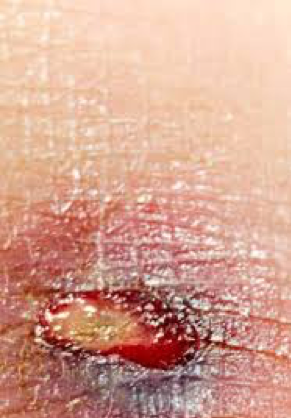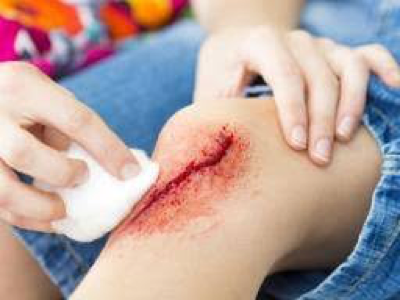Dressing Wounds
Ever heard that you need to let wounds dry out to heal? I speak with a lot of people who have been told this. However, the current research around wounds, show that they heal better with a moist environment! Yes that’s right, keep it moist – but not too moist! FUN FACT: wounds heal from the bottom up and the outside in!
Choosing the best bandage for a wound can be confusing – there are so many different types on the shelf! Our staff are trained to help you choose the best one. However, read on if you want to learn more about it yourself.
Dressing the wound to get the right moisture balance can be a challenge, but massive advances in dressing materials have been made in the last 20 years which really help with this. First up, it’s important to identify what sort of wound you’re dealing with. Is it acute – i.e. will completely heal within 8 -12 weeks with minimal scarring, or is it chronic – i.e. heals slowly and often reoccurs. If it is chronic this means that there are underlying physical conditions that also need to be addressed to aid the healing.
Acute wounds can be described as exudating or dry. Exudating means they are leaking icky stuff, even after they’re no longer bleeding! The icky stuff is blood, without the red blood cells. It helps wounds to heal by keeping them moist, providing nutrients and helping to control bacteria and reduce infection. However, too much exudate slows down healing, so when dressing a wound we aim to reduce excess exudate, while still keeping a moist environment. The two other key factors in aiding healing is effective oxygen circulation and low bacterial load.
Acute, dry wound – clear any debris and gently clean the wound with saline. Cover with a bandage. If it’s a small enough for a band aid, that’s great. A band-aid will protect the wound from being bumped, provide a barrier from bacteria and keep the wound moist. They are not as breathable as some other materials so the wound may end up being too moist, so need to keep an eye on this.
If the wound is big or in an awkward place, a film bandage is really useful. Film bandages are made from polyurethane and act like a second skin. They are transparent, thin, can be cut to shape and size and are highly flexible so are good for joints and other tricky areas. They act as a barrier to bacteria and water (will stay on while showering) but allow oxygen to pass through. They create a moist environment whilst still being breathable – optimal wound healing conditions. Being transparent is also a big bonus because it means you can keep an eye on the wound, watching out for signs of infection. One film bandage can last between 3 to 5 days.
Acute, exudating wound – For this type of wound, we use the same principles as for a dry wound, with the added challenge of removing the excess icky stuff. To do this you need to put an absorbant dressing onto the wound first. This is called the primary dressing. You could use gauze, cotton wool pad or a synthetic, low adherent pad. Then we need to cover the primary dressing to keep it in place. This is called a secondary dressing. Options are tapes, bandages or films and choice of material will depend on things such as stickyness, need for waterproofing, flexibility of the area and painfulness of the wound.
Island dressings are a ready-to-go primary and secondary dressing in one. They have a non-stick, aborbant pad in the middle, to soak up excess exudate and a thin, breathable and flexible film around the outside. They can be either waterproof or not, and come in varying widths and sizes.
Dressing for exudating wounds need to be changed more often than dry wounds because the absorbant pad becomes full and needs regular changing. The frequency of changing will depend on how much ooze is coming out of the wound. As the wound heals, the ooze becomes less and dressing can stay on for longer. Remember, exudate is not all bad, it is your body’s way of providing nutrients and cells to help heal the healing process, it’s just that too much exudates becomes detrimental.
Reduced mobility and inadequate circulation, caused by various medical conditions can cause too much exudate. When dressing a wound it is important to consider the big picture and have an holistic approach to healing.


